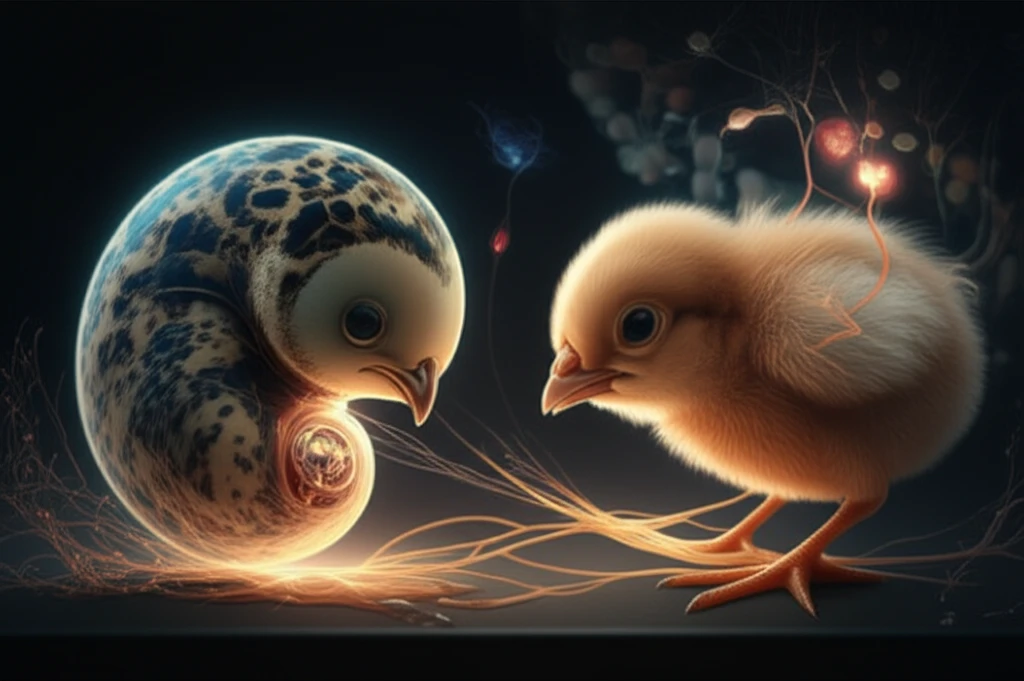
Unlock Development's Secrets: How Cross-Species Transplants Illuminate Cell Migration
"Master the art of quail-chick chimeras: A powerful technique revealing the hidden paths of neural crest cells and their role in building a body."
Avian embryos offer a unique window into the complex processes of vertebrate development. The accessibility of these embryos within the egg allows scientists to easily manipulate and observe developmental events. A particularly powerful technique is the creation of chimeric avian embryos, where tissue from a quail donor is transplanted into a chick host. This combines the benefits of easy manipulation with the ability to indelibly label cell populations, making it possible to track their movements and fates.
Quail-chick chimeras are a classical tool for studying neural crest cells (NCCs). These cells are a transient, migratory population that arises from the dorsal region of the developing neural tube. NCCs undergo a remarkable transformation, transitioning from epithelial cells to mesenchymal cells, allowing them to migrate to various regions of the embryo. Once they reach their destinations, they differentiate into a diverse array of cell types, including cartilage, melanocytes, neurons, and glia.
Understanding how NCCs navigate and differentiate is crucial for understanding development. Their ultimate fate is influenced by: the region of the neural tube they originate from, signals they receive from neighboring cells during migration, and the microenvironment of their final destination. Tracing NCCs from their origin to their final position provides invaluable insight into the developmental processes that govern patterning and organogenesis.
Creating Quail-Chick Chimeras: A Step-by-Step Guide to Tracing Cell Fates

The creation of quail-chick chimeras involves precise surgical techniques. Researchers carefully remove a specific region of the neural tube from a chick embryo and replace it with a corresponding region from a quail embryo. This transplantation can be homotopic (replacing the same region) or heterotopic (replacing a different region), allowing scientists to investigate the pre-specification of NCCs along the rostro-caudal axis.
- Incubation and Preparation: Chick and quail eggs are incubated to the desired developmental stage (typically Hamburger-Hamilton stage 9). The eggs are cleaned, and a small window is carefully opened in the shell to access the embryo. A small amount of albumin is removed to lower the yolk and embryo, providing better visibility.
- Dissection: Rostral and caudal transverse incisions should correspond to the length and region of interest. For unilateral grafts, the incisions should only extend to the lumen of the dorsal neural tube. For bilateral grafts, the incisions should be made across the entire dorsal neural tube.
- Excision and Transplantation: Using fine glass needles, a section of the neural tube is carefully excised from the host (chick) embryo. A corresponding section is then removed from the donor (quail) embryo and transplanted into the host.
- Re-incubation and Analysis: The window in the eggshell is sealed, and the chimeric embryo is re-incubated until the desired stage. The embryos are then processed for analysis, often involving sectioning and immunostaining.
Applications and Future Directions: Unlocking the Potential of Cell Migration Research
The quail-chick chimera technique is not limited to studying NCC migration. It can be combined with other experimental manipulations, such as lens ablation, injection of inhibitory molecules, or genetic manipulation via electroporation. This allows researchers to investigate how specific signals and factors influence NCC development.
Furthermore, this grafting technique can be used to generate other interspecific chimeric embryos, such as quail-duck chimeras (to study NCC contribution to craniofacial morphogenesis) or mouse-chick chimeras (to combine the power of mouse genetics with the ease of avian embryo manipulation).
By refining and expanding upon this powerful technique, scientists can gain a deeper understanding of the fundamental processes that govern embryonic development. This knowledge has broad implications for regenerative medicine, birth defect research, and our understanding of the intricate mechanisms that build a body.
